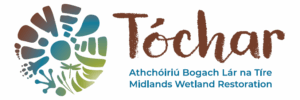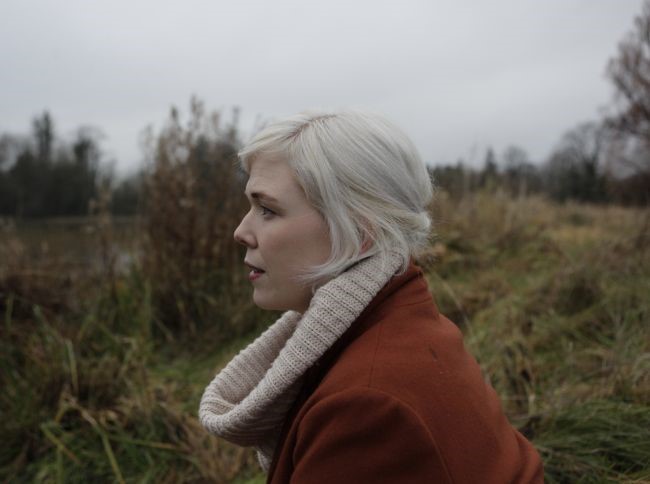
Helen Shaw, of Tóchar Stories, on the shared storytelling from our ‘Bogland – Between the sights of the sun’ public event, bringing lived experience and knowledge together to chart the changing ways we value bogs and wetlands and how we relate to them.
Seamus Heaney’s poem Bogland frames the Irish landscape as
“Our unfenced country
Is bog that keeps crusting
Between the sights of the sun”.
We took those lines as an inspiration for our mid-summer public event in the National Library’s Seamus Heaney “Listen Now Again” exhibition to mark International Bog Day, July 26th. We brought together five people with rich personal and professional experience of living and working with bogs and wetlands for a public discourse exploring transition and how we value and relate to bogland.
Our guests were poet Jane Clarke, a Roscommon native whose work explores themes of nature, land and climate change, composer Ann Cleare, from Birr, Co Offaly, whose work Terrarium draws on audio recordings buried deep within the bog, Fr Michael Long, director at Cabragh Wetlands, Co Tipperary, visual artist, Shane Hynan, from Carbury, Co Kildare, a volunteer with the community owned Knockirr Bog, whose photography draws on the typography and landscape of the bogs, and community historian Seamus Corcoran, chairman of the Lemanaghan Bog Heritage and Conservation Group.
Seamus Heaney in an essay in the late 1970s on a sense of place said there were two ways in which a place can be known; one is lived and unconscious and the other learned and conscious. Our guests shared both a lived and learned sense of place and each brought us into their own roots in the landscape Heaney called “black butter”. Jane Clarke best captured our changing and conflicted relationship with the bog by comparing it to how we often relate to our parents – and how that changes as we grow older.
- Watch: Jane Clarke on what the bog means to her
- Transcript: ‘We’re realising how precious the bogs are”
Jane, in her presentation, read from several of her bog inspired poems including ‘Recipe for a Bog’ which celebrates bog restoration and the shift from extraction to conservation,
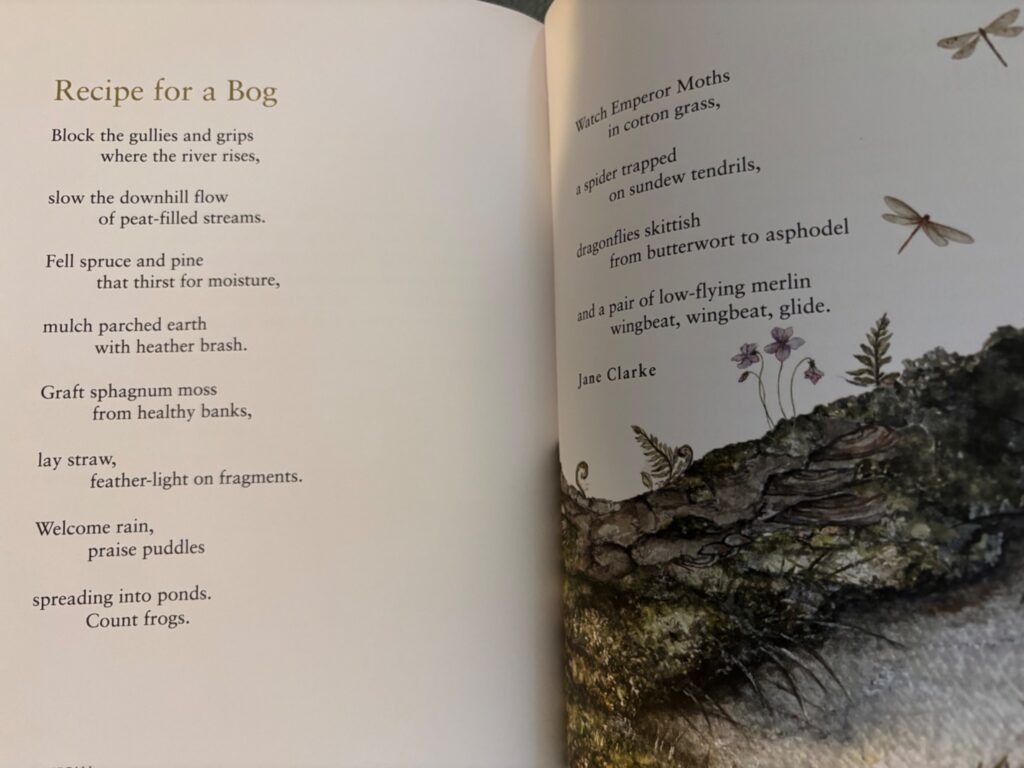
Composer Ann Cleare brought us from words to sounds with the journey behind her contemporary composition Terrarium and in her presentation she shared how she sought to capture a sonic trace of the 10,000 years that shapes and makes a bog. Like Jane she grew up in a rural farming family and bogland was part of their landscape.
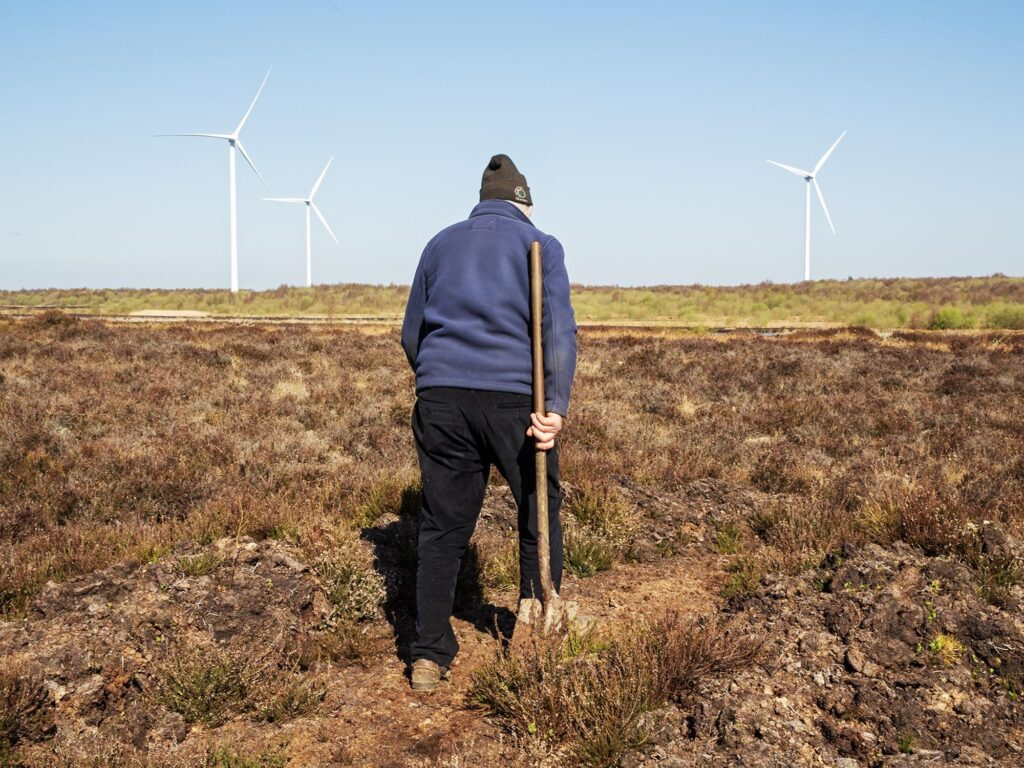
Michael O’Rourke, Walsh Island, photo Shane Hynan
Visual artist Shane Hynan drew on both his own photography and those in the national archive collections in his presentation connecting themes of the culture, folklore and family history of living and working on the bog, from cutting and footing turf, for domestic and Bord na Móna commercial use, to a landscape today where wind turbines are common. On his own relationship to the bogs he says “ now I see them as a space rather than a place”.
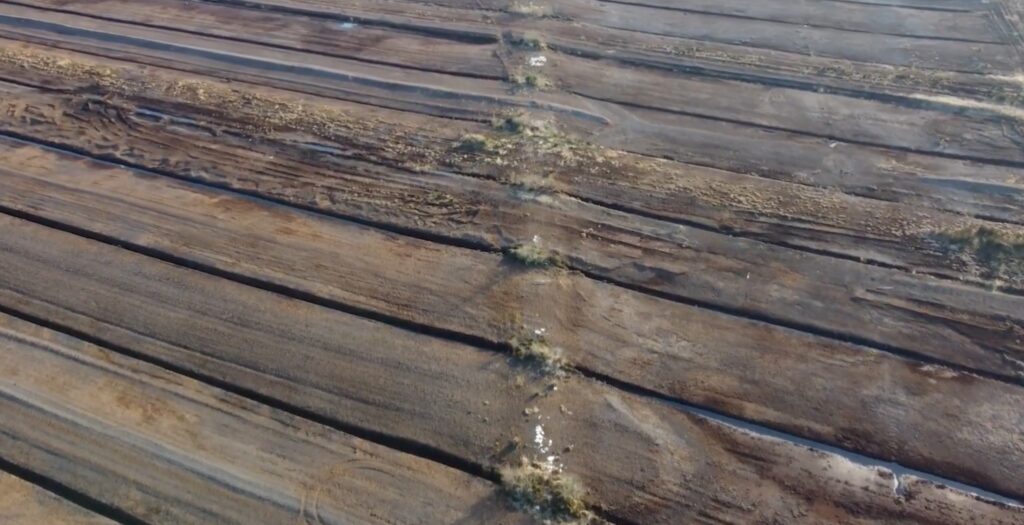
Ancient wooden track visible from Google Earth in Lemanaghan Bog. Dated 500-1000 AD.
Seamus Corcoran brought us back to the metaphor of tóchars or toghers, ancient pathways through the bog, with his story of the rich archaeological finds that have been made in Lemanaghan, Co Offaly – including traces of the early Christian monastic wooden trackway and a 6th Century wooden crozier, preserved by the peat and discovered during Bord na Móna works. When we asked Seamus to describe what the bog meant to him he talked of sounds, of birdsong, like that of the curlew, that we’ve lost or are in danger of losing.
For Seamus, and his group, the contemporary issue is the proposed shift from commercial turf extraction in the bog to a renewal energy wind farm which they oppose on the grounds that the heritage of the landscape should be valued as much as conserving its nature and that the wind farm, in their view, will undermine both.
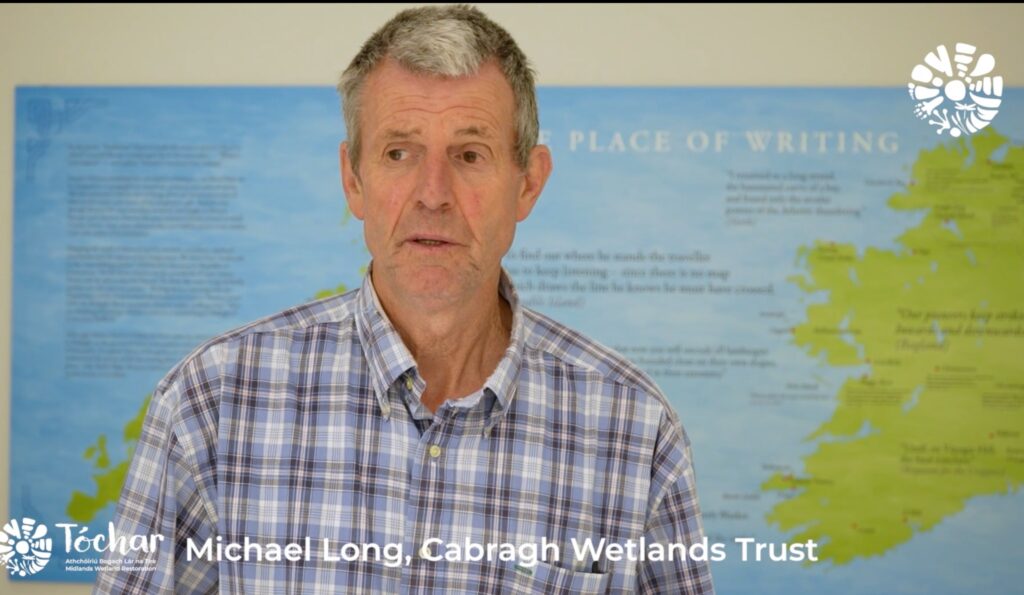
Our final guest speaker was Fr Michael Long, who wove many of the themes together in the framing that ‘everything is connected’ – people, places and nature.
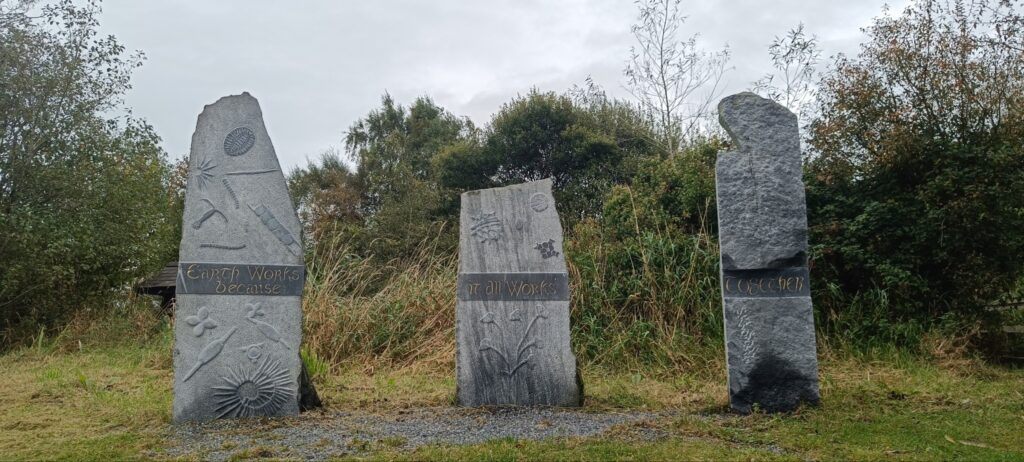
The cosmic walk in Cabragh Wetlands : ‘earth works because it all works together’.
Michael, a volunteer ecologist and director at Cabragh Wetlands, Co Tipperary talked of ‘earth literacy’ and how our ancestors, our grandparents and parents often had less education and academic literacy but had profound connection and relationship with nature. We asked him to explain this a little more:
Watch : Michael Long on the meaning of ‘earth literacy’
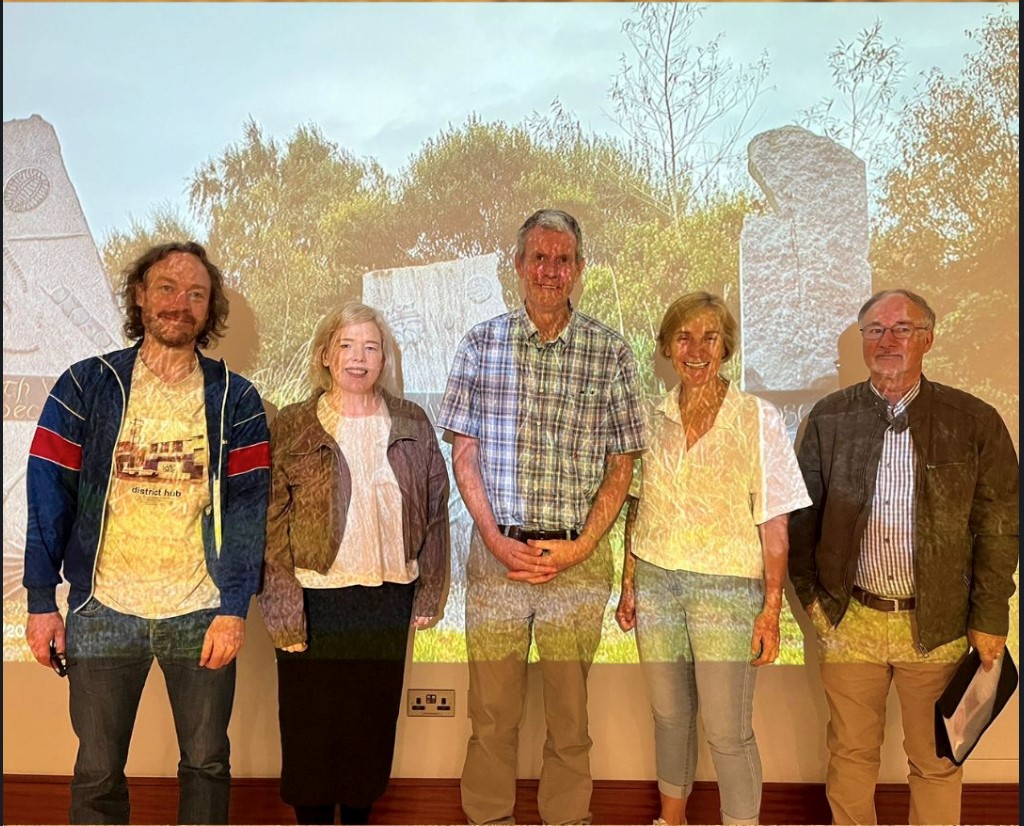
Shane Hynan, Ann Cleare, Fr Michael Long, Jane Clarke and Seamus Corcoran at the end of the event.
You can connect with all the stories from the National Library – Seamus Heaney ‘Listen Now Again’ event on the video showcase and on the Tóchar Stories soundcloud channel. Contact us at tocharstories@gmail.com if you want to find out more.
